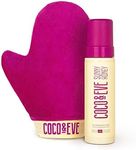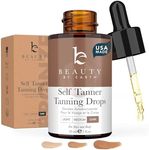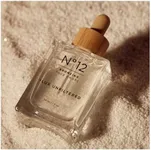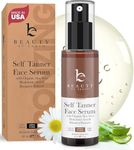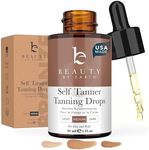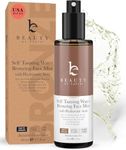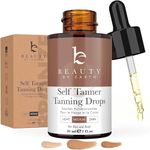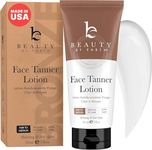Buying Guide for the Best Face Self Tanner
Choosing the right face self-tanner can help you achieve a natural-looking glow without sun exposure. The key is to find a product that matches your skin type, desired shade, and application preferences. Understanding the main features of self-tanners will help you avoid streaks, orange tones, or breakouts, and ensure a smooth, even tan that looks just right for you.Formulation TypeFormulation type refers to the texture and delivery method of the self-tanner, such as lotion, mousse, drops, serum, or mist. This is important because different formulations suit different skin types and application preferences. Lotions and creams are hydrating and good for dry or sensitive skin, while mousses and gels are lightweight and absorb quickly, making them ideal for oily or combination skin. Drops and serums can be mixed with your moisturizer for a customizable tan, and mists are easy for quick, even application. To pick the right one, consider your skin type and how much time you want to spend applying the product.
Shade/Color DepthShade or color depth indicates how light or dark the tan will appear after application. This is crucial because choosing the wrong shade can result in an unnatural look. Self-tanners usually come in light, medium, and dark options. If you have fair skin or want a subtle glow, start with a light shade. Medium shades work well for those with a bit more natural color or who want a noticeable tan. Dark shades are best for deeper skin tones or those seeking a more dramatic result. Always start lighter if you’re unsure, as you can build up the color gradually.
IngredientsIngredients are what make up the self-tanner and can affect both the tanning result and your skin’s health. Look for products with nourishing ingredients like aloe vera, hyaluronic acid, or vitamin E if you have sensitive or dry skin. Avoid self-tanners with alcohol or strong fragrances if you’re prone to irritation. If you have acne-prone skin, seek out non-comedogenic formulas that won’t clog pores. Reading the ingredient list helps you avoid reactions and ensures your skin stays healthy while tanning.
Longevity and FadeLongevity refers to how long the tan lasts before it starts to fade, and how evenly it fades over time. Some self-tanners last only a couple of days, while others can last up to a week. This is important because a longer-lasting tan means less frequent reapplication, but it also means you need to be happy with the result for longer. If you want a tan for a special event, a shorter-lasting product may be fine. For ongoing color, look for products known for gradual, even fading to avoid patchiness.
Application and Drying TimeApplication and drying time describe how easy the product is to apply and how quickly it dries on your skin. Some self-tanners are tinted so you can see where you’ve applied them, which helps prevent streaks, while others are clear and develop color over time. Drying time matters if you’re in a hurry or want to avoid staining clothes or bedding. If you’re new to self-tanning, choose a product with a guide color and quick drying time for the easiest experience.
ScentScent refers to the fragrance of the self-tanner, both during and after application. Some self-tanners have a strong smell due to the active ingredient (DHA), while others are formulated to mask or neutralize this scent. If you’re sensitive to smells or dislike the typical self-tanner odor, look for products labeled as low-odor or fragrance-free. Picking the right scent can make the tanning process more pleasant and comfortable for you.


